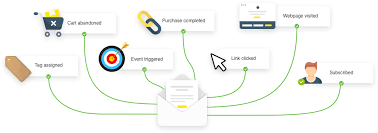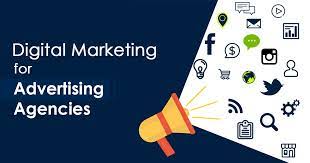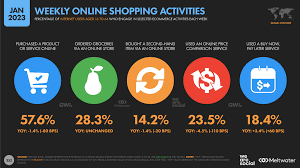Email automation is a powerful marketing tool that can help businesses of all sizes save time, increase efficiency, and boost engagement with their customers. In essence, email automation refers to the process of sending pre-written emails to subscribers on a schedule or triggered by specific actions.
One of the most significant benefits of email automation is that it allows businesses to send personalized messages to their subscribers without having to manually craft each email. This means that businesses can set up automated campaigns that deliver targeted content based on subscriber behavior, interests, and demographics.
For example, an e-commerce business could set up an automated campaign that sends a welcome email to new subscribers and then follows up with a series of emails promoting specific products based on the subscriber’s browsing and purchase history. This type of targeted marketing not only saves time but also increases the likelihood of conversions by delivering relevant content directly to the subscriber’s inbox.
Another benefit of email automation is that it allows businesses to nurture leads over time. By setting up a series of automated emails that provide value and build trust with subscribers, businesses can gradually move leads down the sales funnel until they are ready to make a purchase.
Email automation can also help businesses improve their customer retention rates by sending automated emails at key points in the customer lifecycle. For example, a subscription-based service could send an automated email reminding customers to renew their subscription before it expires or offering them a special discount if they renew early.
In addition to saving time and increasing efficiency, email automation can also help businesses improve their overall marketing performance by providing valuable insights into subscriber behavior. By tracking open rates, click-through rates, and other metrics for each automated campaign, businesses can identify what works and what doesn’t and adjust their strategies accordingly.
Overall, email automation is an essential tool for any business looking to streamline its marketing efforts while still delivering personalized content to its subscribers. By setting up targeted campaigns based on subscriber behavior and demographics, businesses can save time while still delivering relevant content directly to their customers’ inboxes.
8 Tips for Effective Email Automation: Personalization, Segmentation, Triggers, Testing, Scheduling, Compliance, Metrics, and Integration
- Use personalization whenever possible. Personalize emails to make them feel more relevant and engaging to the recipient.
- Utilize segmentation to target specific audiences with personalized messages.
- Automate triggers based on customer behavior or data points such as purchase history, website activity, etc.
- Test different subject lines and email content to determine which ones are most effective for your audience.
- Schedule emails at optimal times when customers are most likely to open and engage with them, such as early morning or late evening hours during the weekdays, or weekends if that is appropriate for your business model
- Make sure all automated emails comply with CAN-SPAM laws and any other applicable regulations in your region
- Track key metrics such as open rates, click-through rates (CTR), unsubscribe rates, etc., so you can analyze what’s working and adjust accordingly
- Integrate automated email campaigns into your overall marketing strategy by connecting them with other channels like social media or paid advertising
Use personalization whenever possible. Personalize emails to make them feel more relevant and engaging to the recipient.
When it comes to email automation, personalization is key. By using personalization techniques in your automated emails, you can make them more engaging, relevant, and effective at driving conversions.
Personalization can take many forms, from using the recipient’s name in the subject line or greeting to tailoring the content of the email based on their interests or past behavior. By making your emails feel more personal and targeted, you can increase the likelihood that the recipient will engage with them and take action.
One of the most effective ways to personalize your automated emails is to use dynamic content. Dynamic content allows you to display different content within an email based on specific criteria such as the recipient’s location, past purchases, or browsing history. This means that each recipient receives a unique version of the email that feels tailored specifically to them.
Another way to personalize your automated emails is to use segmentation. By segmenting your email list based on specific criteria such as age, gender, or interests, you can send targeted messages that are more likely to resonate with each group.
Overall, personalization is a powerful tool for improving the effectiveness of your automated emails. By making them feel more relevant and engaging to the recipient, you can increase open rates, click-through rates, and ultimately drive more conversions. So if you’re not already using personalization in your email automation campaigns, now is the time to start!
Utilize segmentation to target specific audiences with personalized messages.
Email automation has revolutionized the way businesses communicate with their customers. By automating email campaigns, businesses can save time and effort while still delivering personalized content to their subscribers. However, one of the most important tips for successful email automation is to utilize segmentation.
Segmentation refers to the process of dividing your email list into smaller groups based on specific criteria such as demographics, interests, or behavior. By segmenting your list, you can send targeted messages to specific audiences that are more likely to engage with your content.
For example, if you run an online clothing store, you could segment your email list based on gender and send targeted messages promoting men’s or women’s clothing. You could also segment based on purchase history and send personalized recommendations for similar products.
By utilizing segmentation in your email automation campaigns, you can deliver highly relevant content directly to your subscribers’ inboxes. This not only increases engagement but also improves the likelihood of conversions.
Furthermore, segmentation allows you to tailor your messaging to different stages of the customer journey. For example, you could send a welcome series of emails to new subscribers that introduce them to your brand and offer a special discount code. Later on, you could send a series of abandoned cart reminder emails to customers who left items in their cart without completing the purchase.
In conclusion, utilizing segmentation is a crucial tip for successful email automation. By targeting specific audiences with personalized messages based on their interests and behavior, businesses can increase engagement and improve conversion rates. So take the time to segment your email list and start delivering targeted content that resonates with your subscribers today!
Automate triggers based on customer behavior or data points such as purchase history, website activity, etc.
One of the most powerful aspects of email automation is the ability to trigger emails based on customer behavior or data points such as purchase history, website activity, and more. By setting up automated triggers, businesses can deliver targeted messages that are tailored to each customer’s unique interests and needs.
For example, an e-commerce business could set up a trigger that sends an email promoting a specific product to customers who have previously purchased similar items. Or, a software company could send an email offering a discount on a premium subscription to customers who have recently visited the pricing page on their website.
By using customer behavior and data points to trigger automated emails, businesses can increase engagement with their customers and improve their overall marketing performance. These triggers can be set up to occur in real-time, ensuring that customers receive timely messages that are relevant to their current needs.
In addition to improving engagement and performance, automating triggers based on customer behavior and data points can also save time for businesses. Rather than manually crafting each email based on individual customer data, businesses can set up automated campaigns that deliver targeted messages automatically.
Overall, automating triggers based on customer behavior and data points is an essential tip for any business looking to improve its email marketing efforts. By delivering targeted messages that are tailored to each customer’s unique interests and needs, businesses can increase engagement while saving time and improving their overall marketing performance.
Test different subject lines and email content to determine which ones are most effective for your audience.
One of the most critical aspects of email automation is crafting effective subject lines and email content that resonates with your audience. While it may be tempting to stick to what has worked in the past, testing different subject lines and email content can help you determine which strategies are most effective for your subscribers.
When testing different subject lines, it’s essential to keep in mind that the goal is to capture your audience’s attention and entice them to open the email. Try experimenting with different lengths, tones, and keywords to see what works best. For example, you might try using a question as a subject line or incorporating a sense of urgency by using phrases like “limited time offer.”
Similarly, testing different email content can help you identify which types of messages resonate best with your audience. This might include trying out different formats such as plain text versus HTML emails or testing different calls-to-action (CTAs) to see which ones drive the most engagement.
To get started with testing, consider creating two or three variations of each element you want to test. Then, divide your subscriber list into equal segments and send each variation to a separate group. Be sure to track metrics such as open rates and click-through rates for each variation so that you can compare their effectiveness.
By regularly testing different subject lines and email content, you can refine your email marketing strategy over time and improve engagement with your subscribers. Remember that what works for one audience may not work for another, so it’s essential to keep experimenting until you find what resonates best with your unique audience.
Schedule emails at optimal times when customers are most likely to open and engage with them, such as early morning or late evening hours during the weekdays, or weekends if that is appropriate for your business model
When it comes to email automation, timing is everything. Sending emails at the right time can significantly improve open rates and engagement with your subscribers. That’s why scheduling emails at optimal times when customers are most likely to open and engage with them is a crucial tip for any business looking to maximize the effectiveness of their email campaigns.
Research has shown that early morning or late evening hours during the weekdays, or weekends, are some of the best times to send emails. This is because people tend to check their emails first thing in the morning and before bed, as well as during their downtime on weekends.
However, it’s important to keep in mind that optimal email sending times can vary depending on your target audience and business model. For example, if you’re targeting professionals who work traditional 9-5 jobs, sending emails during the workday may not be effective as they may be too busy to check their inbox.
To determine the best time to send emails for your specific audience and business model, consider conducting A/B testing. This involves sending two versions of an email at different times and comparing the results. By analyzing open rates and engagement metrics for each version, you can identify which time works best for your subscribers.
In conclusion, scheduling emails at optimal times is a simple yet effective way to improve the success of your email campaigns. By taking into account your target audience and business model and conducting A/B testing when necessary, you can ensure that your automated emails are delivered at a time when they are most likely to be opened and engaged with by your subscribers.
Make sure all automated emails comply with CAN-SPAM laws and any other applicable regulations in your region
When setting up email automation for your business, it’s crucial to ensure that all automated emails comply with CAN-SPAM laws and any other applicable regulations in your region. These laws are in place to protect consumers from receiving unwanted or unsolicited emails, and failure to comply can result in hefty fines and damage to your brand’s reputation.
The CAN-SPAM Act requires that all commercial emails include a clear and conspicuous unsubscribe link, a valid physical mailing address, and a subject line that accurately reflects the content of the email. Additionally, the act prohibits the use of deceptive subject lines, false or misleading header information, and the use of harvested email addresses.
To ensure compliance with CAN-SPAM laws and other applicable regulations, it’s important to have a thorough understanding of the rules and guidelines governing email marketing in your region. This may require consulting with legal experts or regulatory agencies to ensure that your automated emails meet all necessary requirements.
In addition to complying with regulations, it’s also essential to consider best practices for email marketing when setting up automated campaigns. This includes segmenting your email list based on subscriber behavior and interests, personalizing content whenever possible, and testing different subject lines and content to optimize performance.
By taking the time to ensure compliance with regulations and best practices for email marketing, businesses can maximize the effectiveness of their automated campaigns while avoiding potential legal issues. Ultimately, this can help businesses build stronger relationships with their subscribers while minimizing risks associated with non-compliance.
Track key metrics such as open rates, click-through rates (CTR), unsubscribe rates, etc., so you can analyze what’s working and adjust accordingly
One of the most important tips for successful email automation is to track key metrics such as open rates, click-through rates (CTR), unsubscribe rates, and more. By monitoring these metrics, you can gain valuable insights into how your subscribers are interacting with your emails and adjust your strategies accordingly.
Open rates, for example, can give you an idea of how well your subject lines are resonating with your subscribers. If you notice that your open rates are low, it may be time to re-evaluate your subject lines and try something new.
Click-through rates (CTR), on the other hand, can help you determine how engaging your content is. If you’re not seeing a high CTR for a particular email or campaign, it may be time to rework the content or make it more visually appealing.
Unsubscribe rates are also important to monitor as they can indicate that something in your emails is turning subscribers off. If you notice a sudden spike in unsubscribe rates, it may be time to take a closer look at the content of your emails and see if there’s anything that could be improved.
By tracking these metrics and adjusting accordingly, you can improve the effectiveness of your email automation campaigns over time. It’s important to remember that email automation is not a one-and-done process but rather an ongoing effort to optimize and improve your marketing strategies.
In conclusion, tracking key metrics such as open rates, click-through rates (CTR), unsubscribe rates, etc., is essential for successful email automation. By analyzing what’s working and what’s not working in your campaigns and making adjustments accordingly, you can ensure that you’re delivering engaging content that resonates with your subscribers and drives conversions for your business.
Integrate automated email campaigns into your overall marketing strategy by connecting them with other channels like social media or paid advertising
Email automation is a powerful tool for businesses to communicate with their customers. However, to make the most of email automation, it’s important to integrate it into your overall marketing strategy. One way to do this is by connecting automated email campaigns with other channels like social media or paid advertising.
By integrating email automation with other channels, you can create a cohesive message that reaches your customers across multiple platforms. For example, you could use social media to promote a new product launch and then follow up with an automated email campaign that provides more details about the product and encourages customers to make a purchase.
Paid advertising can also be used in conjunction with email automation to drive traffic and conversions. For example, you could use Google Ads or Facebook Ads to promote a special offer and then send an automated email campaign that provides more information about the offer and encourages customers to take advantage of it.
Integrating email automation with other channels also allows you to track customer behavior across multiple touchpoints. By tracking how customers interact with your brand across different platforms, you can gain valuable insights into what works and what doesn’t and adjust your marketing strategy accordingly.
In conclusion, integrating automated email campaigns into your overall marketing strategy by connecting them with other channels like social media or paid advertising can help you create a cohesive message that reaches your customers across multiple platforms. By tracking customer behavior across different touchpoints, you can gain valuable insights into what works and what doesn’t and adjust your marketing strategy accordingly.




